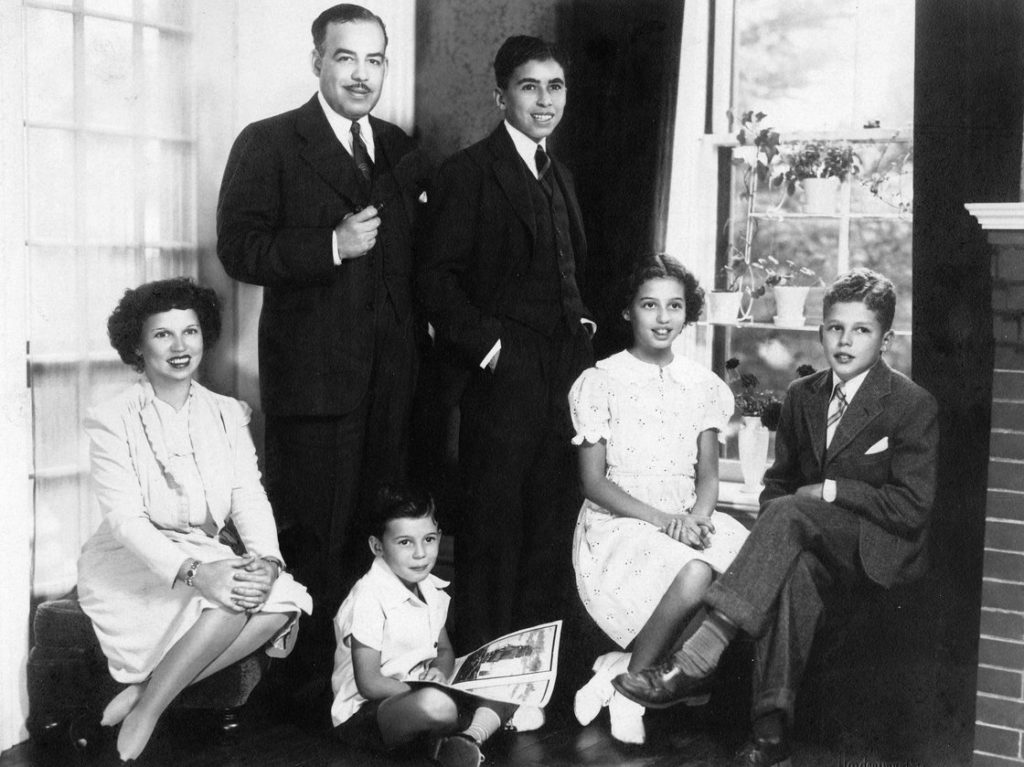ALBERT C. JOHNSTON, JR.
LOST BOUNDARIES BIO INTRO
When Albert Jr., was 16 years old, he received crushing news that he and his family were actually part Negro and were living as model white citizens in New Hampshire. His parents decided to take this course of action after his father, Albert Sr., after graduating from Rush Medical in Chicago in 1924, was unable to secure employment from many medical institutions, because he was a part Negro. After 31 refusals, he applied and was accepted at the hospital in Portland, Maine, where they did not ask him about his race.
Dr. Johnston wanted to help all kinds of people with their medical needs, not just one particular race. He was rejected from practicing medicine both from white and black institutions. “Too light to be black and too dark to be white.” Both he and his wife were light skinned African Americans, or Negroes as they were called back then.
At the suggestion of his wife Thyra, who grew up in New Orleans during racial segregation and experienced prejudice first hand said, “If they ask you about your race on future interviews, don’t tell them anything.” Fortunately, for Doc Johnston they didn’t ask, and he got into the medical practice field. From that point on, both he and his wife decided to keep their race a secret as long as they could.
When war broke out in 1941, Doc Johnston volunteered and was accepted as a lieutenant commander in the United States Navy to serve as a radiologist, where he had returned to school for 1936-1938. He received his PHD in radiology at Harvard University. This was one of the earliest classes of radiology that was taught in the U.S.
The family returned to New Hampshire, where they lived before moving to Boston after Doc Johnston’s radiology training was completed. It was there that Dr. Johnston signed up for the Navy and an investigator came to interview him. During the interview, the investigation revealed that Dr. Johnston was really part Negro, as the Navy did some background research on him. Shortly thereafter, Doc Johnston’s naval commission as an officer was rejected due to physical reasons, which in reality was, “we don’t have doctors of color.” His rejection letter and uniform are still on display in the Historical Society of Chester County in Keene, New Hampshire.
Now, the Johnston family’s world had been turned upside down and all would soon know that they were actually living not as what they were perceived to be by society.
At the time, young Albert Jr. thought he could grow up to be president someday. Now this was not going to happen due to his race. Other opportunities would be limited, due to the countries open discriminatory practices that were either strong or subtle in nature, depending upon the location.
When Albert Jr. was home from the prestigious Mount Herman School for Boys now part of Northfield Mount Herman, his parents decided to disclose to him that they were both part Negro, which made him part Negro also. From now, future prospects for young Albert Jr. looked grim
After learning of his true ethnic identity, Albert Jr. spent a considerable amount of time exploring the world of the African American culture, since he didn’t know it thinking all along he was white. He eventually provided the outline for the publication entitled, “Lost Boundaries” William Lindsay
White, based upon his family’s experience, which became a major motion picture starring Hollywood legend Mel Ferrer. It won an award at the Cannes Film Festival in 1949 for Best Screenplay. In addition, he was able to compose two pieces of music and performed these for the motion picture entitled, “Guess I’m Through with Love, and Tanganyika”, a rhythmic instrumental piece for 2 pianos.
Albert Jr. sought out famed film producer, Louis de Rochemont at his New Hampshire home, about his family’s story. de Rochemont was so impressed with young Albert’s fascinating history that he decided to make a movie about his experience. There were no financial backers in Hollywood making this film that would cross color lines. Yet, de Rochemont was so determined to make this film that he mortgaged his home to finance the picture.
When the film debuted in movie theaters in certain parts of the country it was well accepted, while others across the country left and gasped, “Did this really happen? How could it have been?”
See the film review by Louis J. Wasser, a freelance essayist and critic specializing in film and classical music.
“The Doctor, His Secret A Lost Movie”
